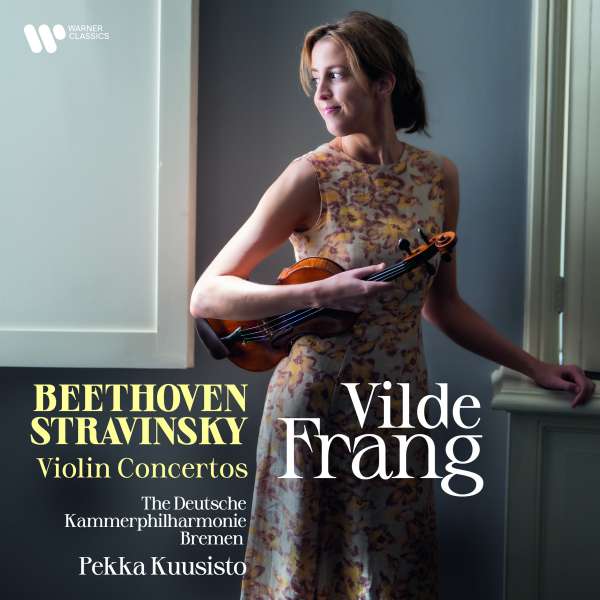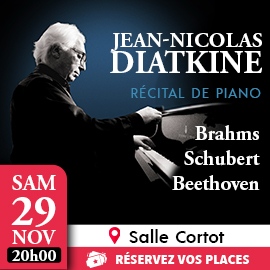Es gibt kräftigere, zupackendere oder auch bloß elegantere Interpretationen des Violinkonzerts von Ludwig van Beethoven, aber ich kenne keine, die so lyrisch, oft geradezu intimistisch, so gefühlvoll und so feminin ist wie diese Aufnahme mit der technisch makellosen Vilde Frang. Und damit erobert sich die norwegische Geigerin gleich einen Sonderplatz im Angebot.
Der lange erste Satz wird leicht und flüssig gespielt, mit vielen Farben und immer wieder belebenden Akzenten, völlig natürlich und ohne je pathetisch zu wirken. Und weil Vilde Frang in Pekka Kuusisto einen gleichgesinnten Partner hat, wird der Dialog zwischen ihr und der Deutschen Kammerphilharmonie sehr anregend und lebendig. Als Kadenz benutzt Vilde Frang jene, die Beethoven für die Klavierfassung des Violinkonzerts schrieb, und die eine extra dafür verfasste Paukenstimme enthält.
Das Larghetto ist zart-lyrisch und intim, und doch lebendig und detailreich, nicht einfach verträumt losgelassen, sondern aktiv charmant.
Das Finale ist tänzerisch und beschwingt und zeigt immer wieder einen wunderbaren Dialog zwischen der Solistin und dem wach mitwirkenden Orchester.
Das viersätzige, neoklassische Stravinsky-Konzert ist in einer knackig frischen Interpretation zu hören. Klarheit des musikalischen Diskurses prägt diese Aufnahme im Orchesterpart. Fern jeder romantischen Verbrämung konzentrieren sich die Solistin und der Dirigent auf die Rhythmik, den federnden Schwung und die Farben der Musik. Extreme werden dabei tunlichst vermieden, so dass die Musik in ihrer ganzen Vitalität auch elegant bleibt.
There are stronger, more gripping or even merely more elegant interpretations of Ludwig van Beethoven’s violin concerto, but I know of none that is as lyrical, often downright intimate, as soulful and as feminine as this recording with the technically flawless Vilde Frang. And with that, the Norwegian violinist immediately earns a special place in the lineup.
The long first movement is played lightly and fluidly, with many colors and always invigorating accents, completely natural and without ever seeming pathetic. And because Vilde Frang has a like-minded partner in Pekka Kuusisto, the dialogue between her and the Deutsche Kammerphilharmonie becomes very stimulating and lively. As a cadenza, Vilde Frang uses the one Beethoven wrote for the piano version of the Violin Concerto, which includes a timpani part written especially for it.
The Larghetto is delicately lyrical and intimate, yet vivid and detailed, not simply dreamily let loose but actively charming.
The finale is dance-like and upbeat, and repeatedly features a wonderful dialogue between the soloist and the alertly participating orchestra.
The four-movement, neoclassical Stravinsky concerto is heard in a crisp, fresh interpretation. Clarity of musical discourse characterizes this recording in the orchestral part. Far from any romantic dressing up, the soloist and the conductor concentrate on the rhythm, the bouncy momentum and the colors of the music. Extremes are avoided as much as possible, so that the music remains elegant in all its vitality.




















